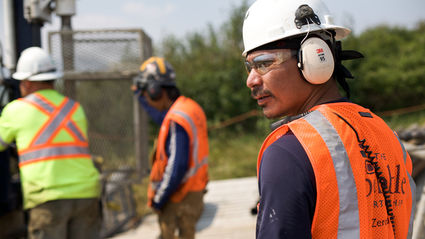Concerns to hope – public talks Pebble
Copper mine plan draws wide spectrum of stakeholder input North of 60 Mining News – April 19, 2019
Last updated 9/25/2020 at 2:42pm

Pebble Limited Partnership
Pebble provided jobs for many Bristol Bay residents during the roughly two decades of exploration at the enormous copper deposit. Many people living closest to the mine hope new jobs will arise from a future mine there.
By this time next year, Pebble Partnership could be holding the first of dozens of permits it will need to begin developing a mine at its enormous copper-gold-molybdenum deposit in Southwest Alaska, according to Sheila Newman, deputy chief of the regulatory division, U.S. Army Corps of Engineers – Alaska District.
The timing or issuance of permits, however, are not guaranteed – permitting a...
For access to this article please
sign in or
subscribe.








Reader Comments(0)